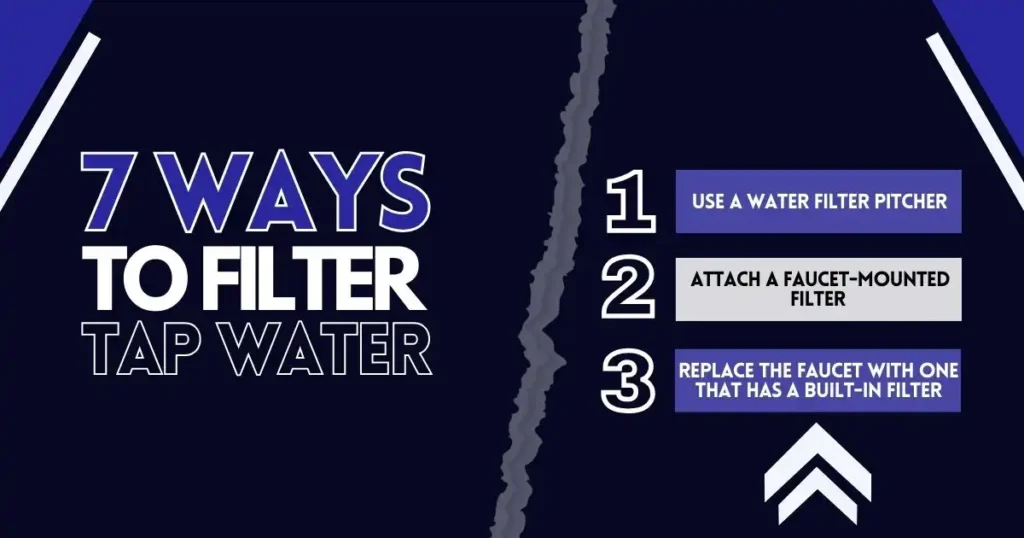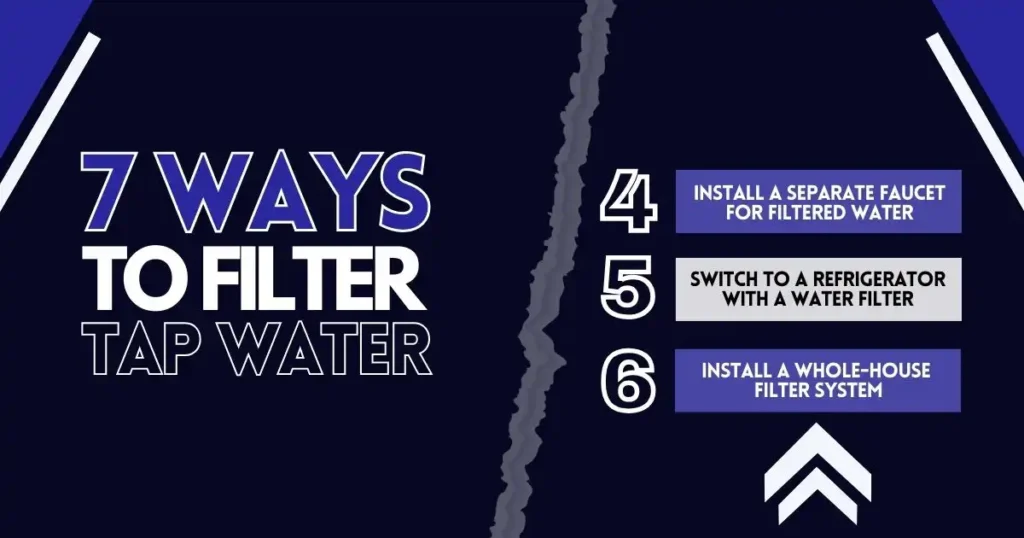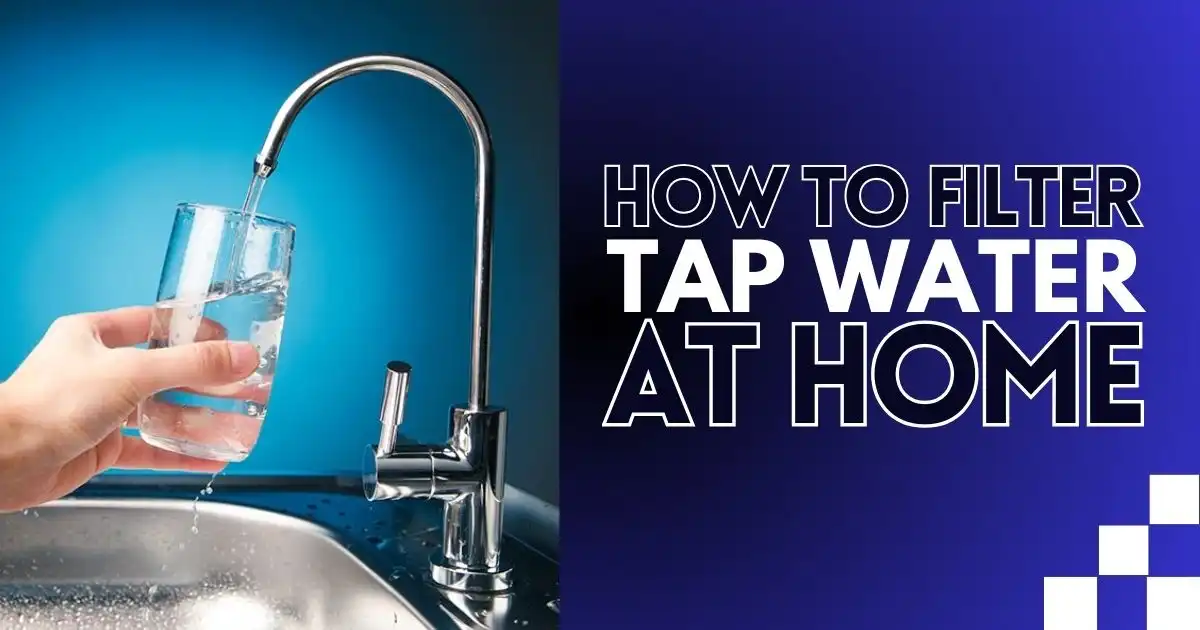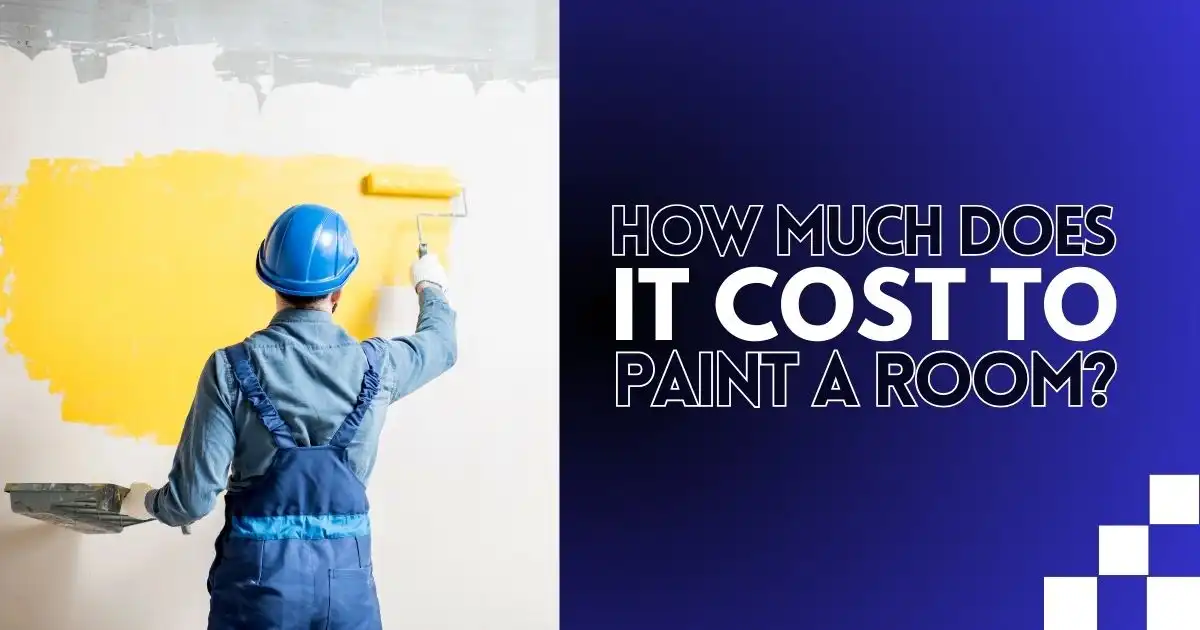Finding the right solution for your home’s water can feel overwhelming, especially when you have a busy lifestyle and a family to care for. You want a water filtration system that’s easy to use, affordable, and doesn’t take up too much of your time.
Fortunately, there are simple and effective options that fit into your daily routine, making it easier to ensure your family drinks clean, safe water without the extra effort.
Why Filter Your Tap Water?
Drinking clean water is essential for your health. Tap water may contain harmful substances that can affect your overall well-being. Clean water helps keep your body hydrated, supports healthy digestion, and keeps your organs working properly. Filtering your water removes potential risks, ensuring you drink water that’s safer and better for your health.
Tap water can sometimes contain harmful chemicals, bacteria, or other substances. Some of the common contaminants include:
- Chlorine: Often added to disinfect water but can affect the taste and odor.
- Lead: Can come from old pipes and may harm the nervous system.
- Fluoride: Though added for dental health, excessive amounts can be harmful.
- Bacteria: Can cause infections or illness if present in the water.
- Sediment: Tiny particles like dirt or rust that can make water look dirty or cloudy.
- Pesticides and herbicides: These chemicals can end up in water from nearby farms or lawns.
Filtering your tap water helps remove or reduce these contaminants, making it safer for drinking and cooking.
What are the Benefits of Filtered Water?
Filtered water is free from impurities and harmful substances. Having a water filter at home can offer several advantages:
- Safer to Drink: No filter system can remove every contaminant, but the right filter can get rid of things like sediment, iron, lead, fluoride, and bacteria. It’s a good idea to consult a licensed plumber to help you choose the best filter based on your water quality (and to see if you need one at all).
- Better taste and appearance: Filtering water can remove minerals and chlorine, making the water look clearer and taste fresher, according to many people.
7 Ways to Filter Tap Water
Filtering your tap water at home can be as simple as using a water filter pitcher or as involved as installing a whole-house system. These are some of the best way to filter tap water and purify it in your home.

1. Use a Water Filter Pitcher
Water filter pitchers are small filters that you can keep in your fridge or on the countertop. They’re affordable and come in different sizes for you and your family. Fill the pitcher with tap water, and let it filter before drinking. Most models need a new filter every two months or after filtering 40 gallons, whichever comes first.
2. Attach a Faucet-Mounted Filter
You can attach a filter directly to your faucet. Many models let you turn the filter on and off, so you only use it for drinking water. Installing one usually doesn’t require tools. Steps:
- Turn off the faucet and optional speedy valve under the sink.
- Remove the aerator from your faucet and save the gasket.
- If your faucet has external threads, you don’t need an adapter. For internal threads, screw in the adapter that comes with the filter.
- Attach the filter by turning it clockwise.
- Insert the filter cartridge.
- Turn the water back on and flush the filter for 10 minutes.
3. Replace the Faucet with One That Has a Built-In Filter
You can swap your existing faucet for one that has a built-in filter. Many models let you turn the filter on and off for drinking water. Steps:
- Turn off the water at the speedy valve.
- Release the pressure by turning on the cold water.
- Disconnect the water supply hose under the sink.
- Remove the faucet by unscrewing the nuts under the counter.
- Install the new faucet, attach it with new nuts, and reconnect the water hose.
- Turn the water back on and run the filter for 10 minutes.

4. Install a Separate Faucet for Filtered Water
For filtered water on tap, you can install a separate faucet for drinking water with an under-sink filter. The easiest way is to use an existing hole in your countertop for a sprayer or soap dispenser. Steps:
- Turn off the cold water supply.
- Release the water pressure.
- Mark where to install the filter under your sink, leaving 2-3 inches of space for easy filter changes.
- Mount the bracket and connect the filter hose.
- Connect the filter to the faucet, insert the cartridge, and secure everything.
- Check for leaks and flush the filter for 10 minutes.
5. Switch to a Refrigerator with a Water Filter
Many newer refrigerators come with built-in water filters. Some models also provide ice. If you don’t have a water line running to your fridge, a plumber can install one. Remember to replace the filter every six months.
6. Install a Whole-House Filter System
A whole-house filter system purifies all the water entering your home, including for showers and appliances. If your water has many contaminants or a strong odor, this might be the best option. You can choose from systems like carbon-based filters or reverse osmosis.
This system is best installed by a professional plumber, as it involves cutting pipes and connecting fittings. Doing it yourself could lead to water damage and higher costs if mistakes happen.
7. DIY Filters for Emergencies
In case of a water shutoff, power outage, or natural disaster, handheld or natural filters can help. Before purifying unknown water, make sure you’re using safe methods. Combine filtering and boiling or UV treatment to remove harmful microorganisms. Some emergency options include:
- Ultraviolet filters: Kill harmful microorganisms.
- Pump filters: Push water through a filter for purification.
- Bottle, straw, or squeeze filters: Great for small amounts of water.
- Boiling: Kills pathogens after 60 seconds.
- Chemical treatments: Use iodine or chlorine drops to purify.
- Sifting: Use a bandana or coffee filter to remove debris.
- Tablets and droplets: Treat common waterborne diseases.
- Charcoal: Use activated charcoal to filter water.
No matter your needs or budget, there are many ways to filter water at home. From basic pitcher filters to more advanced whole-house systems, the options are varied and flexible to suit your lifestyle. With the right filter, you can enjoy cleaner, safer water every day—no hassle, just pure water for you and your family.
Simple Solutions for Clean, Safe Tap Water at Home
Filtering your tap water at home doesn’t have to be complicated or time-consuming. With so many simple and affordable options available, you can find the right solution to fit your family’s needs and lifestyle. If you choose a pitcher, a faucet filter, or invest in a whole-house system, each option helps improve your water’s safety, taste, and overall quality.
If you’re ready to improve your water quality, Vegas Plumbing Pros is here to help! Our expert plumbers can guide you in choosing and installing the perfect water filtration system for your home. Contact us today to get started on ensuring your family enjoys cleaner, safer water every day!
FAQs
Is tap water safe to drink?
Tap water is generally safe to drink in areas with well-regulated water systems. However, its safety can vary depending on location, local water quality, and plumbing conditions. While water treatment plants disinfect to kill pathogens, issues like aging infrastructure or nearby pollution can affect water quality. Consider using a filter if you’re concerned about contaminants.
What is the healthiest way to filter tap water?
The EWG has recognized reverse osmosis as the most effective filtration system. These systems can be installed under specific sinks or for the entire house. They are great for removing arsenic, fluoride, hexavalent chromium, nitrates, and perchlorate.
How to filter tap water at home without a filter?
Boiling is a simple and effective way to filter water at home. It’s the best way to filter water, killing harmful germs like viruses, bacteria, and parasites. The high temperature and the time spent boiling are key to making sure harmful organisms are removed, even in cloudy water.
How do I purify my tap water at home?
If you don’t have bottled water, boiling is a good way to make water safe. Boiling kills harmful bacteria, viruses, and parasites (WHO, 2015). If the water is cloudy, let it settle first and then filter it through a clean cloth, paper towel, or coffee filter to get filtered tap water. Boil the water for at least one minute to make sure it’s safe.



